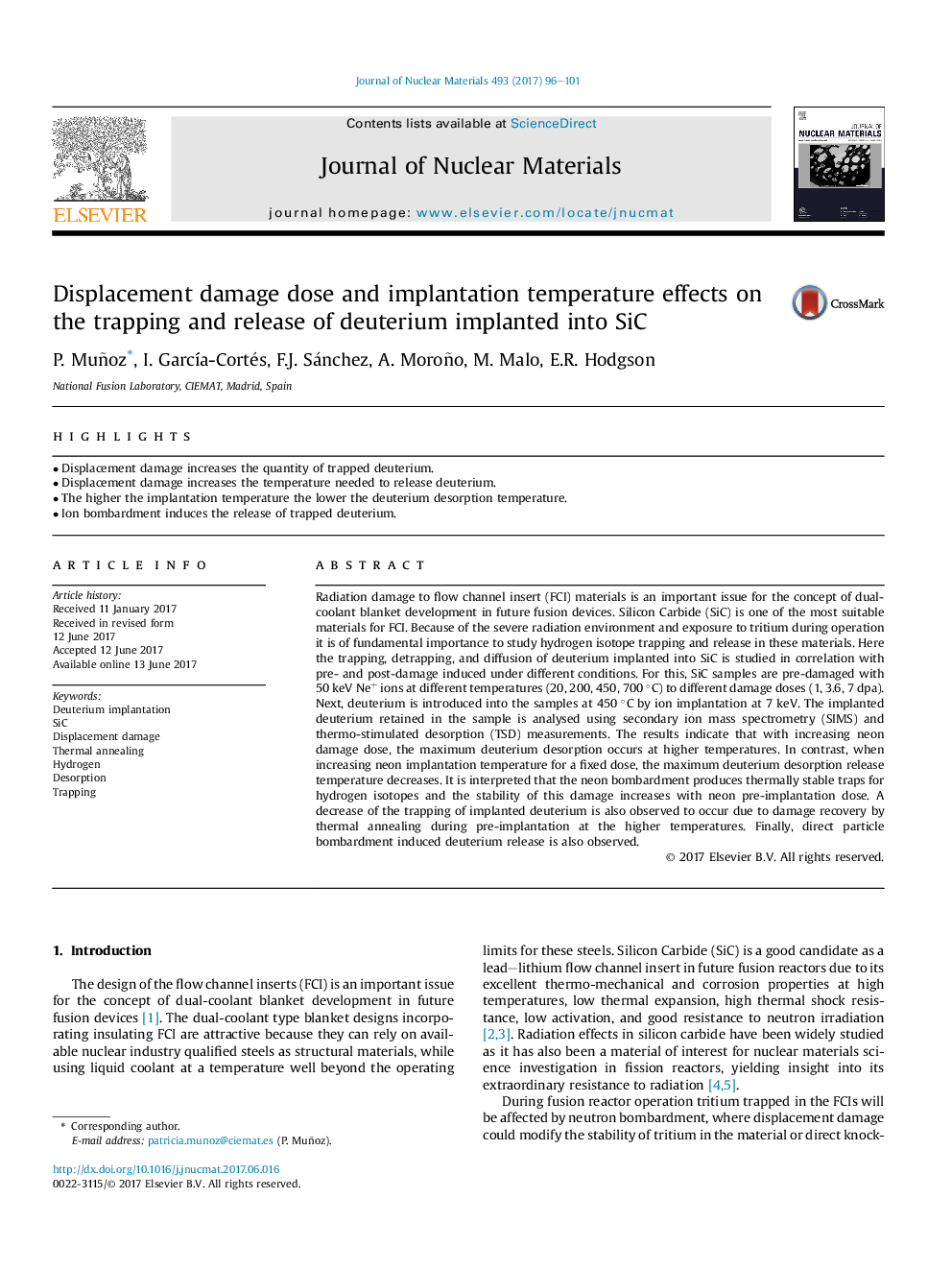| Article ID | Journal | Published Year | Pages | File Type |
|---|---|---|---|---|
| 5453977 | Journal of Nuclear Materials | 2017 | 6 Pages |
Abstract
Radiation damage to flow channel insert (FCI) materials is an important issue for the concept of dual-coolant blanket development in future fusion devices. Silicon Carbide (SiC) is one of the most suitable materials for FCI. Because of the severe radiation environment and exposure to tritium during operation it is of fundamental importance to study hydrogen isotope trapping and release in these materials. Here the trapping, detrapping, and diffusion of deuterium implanted into SiC is studied in correlation with pre- and post-damage induced under different conditions. For this, SiC samples are pre-damaged with 50 keV Ne+ ions at different temperatures (20, 200, 450, 700 °C) to different damage doses (1, 3.6, 7 dpa). Next, deuterium is introduced into the samples at 450 °C by ion implantation at 7 keV. The implanted deuterium retained in the sample is analysed using secondary ion mass spectrometry (SIMS) and thermo-stimulated desorption (TSD) measurements. The results indicate that with increasing neon damage dose, the maximum deuterium desorption occurs at higher temperatures. In contrast, when increasing neon implantation temperature for a fixed dose, the maximum deuterium desorption release temperature decreases. It is interpreted that the neon bombardment produces thermally stable traps for hydrogen isotopes and the stability of this damage increases with neon pre-implantation dose. A decrease of the trapping of implanted deuterium is also observed to occur due to damage recovery by thermal annealing during pre-implantation at the higher temperatures. Finally, direct particle bombardment induced deuterium release is also observed.
Related Topics
Physical Sciences and Engineering
Energy
Nuclear Energy and Engineering
Authors
P. Muñoz, I. GarcÃa-Cortés, F.J. Sánchez, A. Moroño, M. Malo, E.R. Hodgson,
